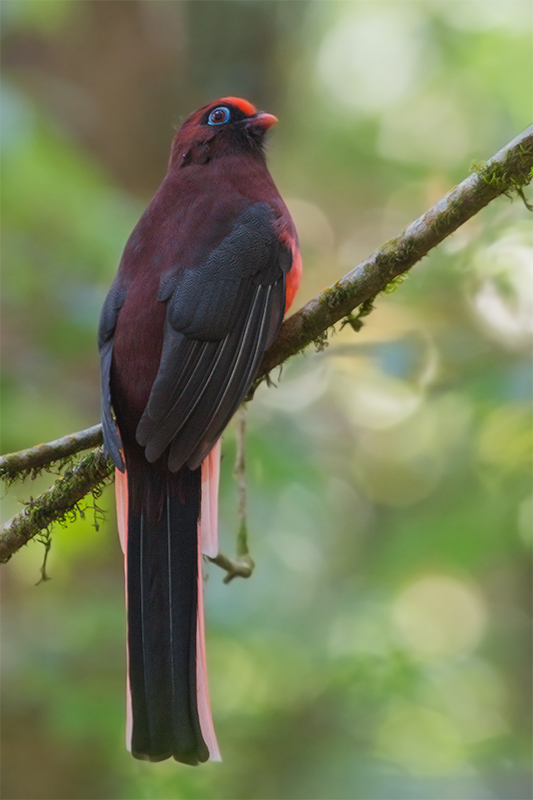Facts About Ward's trogon
Ward's trogon is an exquisite bird belonging to the Trogonidae family, native to the northeastern Indian subcontinent and parts of Southeast Asia, including Bhutan, India, Tibet, Myanmar, and a distinct population in northern Vietnam. This captivating species thrives in temperate forests and subtropical or tropical moist lowland forests, although it faces significant threats due to habitat loss.
Named after Francis Kingdon-Ward, an esteemed English botanist and explorer, Ward's trogon measures approximately 35-38 cm (13.8-15 inches) in length and weighs between 115-120 grams (4-4.2 ounces). The males are particularly vibrant, displaying pink-red feathers on their breast, belly, undertail, and forehead. Their chest, back, wings, and uppertail exhibit a dark slate and maroon hue. Contrastingly, females feature similar patterns with yellow replacing the pink-red and dark olive substituting the darker colors. Both genders are distinguished by a striking blue ring around their eyes.
These birds typically inhabit montane regions at elevations ranging from 1,500 to 3,200 meters (4,900 to 10,500 feet), although they can occasionally be found as low as 300 meters (980 feet). They favor subtropical hill forests dominated by oak (Quercus) and chestnut (Castanopsis) trees, in addition to temperate broadleaf evergreen forests. While Ward's trogon is a rare sight, it can be locally abundant. It was previously classified as vulnerable by the IUCN; however, its status was updated to near-threatened due to stable populations in Bhutan.
There remains much to uncover about the behavior of Ward's trogon. Their diet primarily consists of insects such as moths, stick insects, grasshoppers, bugs, and large seeds. Their nesting habits are still largely unknown, but birds in breeding condition have been observed in March and April.

 India
India